Book review: The Path of the Blue Raven
by Mark Townsend
★★★★
This is a fascinating, brutally honest peek into the life of a Vicar (Church of England) who first found himself estranged from his priesthood, and then found God. Disillusioned with institutionalized religion, and by circumstance dissolved of his duties as a priest, Mark Townsend became free to pursue God into the world of nature-based spirituality.
Townsend now finds organized religion a barrier to the divine, not a door. Townsend hasn’t rejected Jesus; he still finds the person of Jesus “intensely exciting” and continues to embrace the Christ spirit, but in a more down-to-earth way. He quotes Richard Rohr to say, “One of the most successful ways Christians have avoided doing what Jesus said was to simply worship him. It’s easier to bow down and shout constant hallelujahs than to get our hands dirty by following him out into the world of brokenness and mess.”
In a broken and messy world, Townsend now finds a new way—a pagan way—of interpreting the scripture. The story of Jesus, he explains, merely makes true what already is. The Incarnation? We’re all already filled with divinity. The sacraments? We’re all in some way the body and blood of God (humans filled with deity).
Townsend never fit the mold of a traditional priest in the first place; his life-long practice as a magician (he is a “conjurer”), his frequent bar visits, his occasional colorful language, his determination to respect the feelings and beliefs of others, these things hardly endeared him to strict Christians. Townsend is imperfect and genuine, a person we can identify with. He knows his magic isn’t real, has never pretended it is, but he finds in it a world of enchantment able to awaken us to an appreciation of greater magic, greater enchantment. That’s the subtitle of his book: From Religion to Re-Enchantment. Townsend invites us to live with him a fully authentic life, whatever the cost.
Although foreign to my own version of Christianity, I found this journey both enjoyable and intriguing.

Revelation 21:21, the Pearly Gates
The twelve gates were twelve pearls, each gate made of a single pearl. The great street of the city was of pure gold, like transparent glass.
//Ever wonder about the origin of the “pearly gates of heaven?” Here it is in Revelation, in black and white. This is where St. Peter waits with his long list, checking off each soul as they enter heaven, right?
Except it isn’t quite that way. First off, there are twelve pearly gates, not one. Picture a square city, a New Jerusalem, with three gates on the north wall, three on the south, three on the east, three on the west. On the twelve gates are written the names of the twelve tribes of Israel, one for each tribe, signifying the long-awaited unification of Israel, as each tribe comes marching home through their own gate.
At each gate, an angel stands guard. If you want through the pearly gates, your name better be written in the book of life! Everybody else stays outside. And they’re not likely to ever get in, because the walls are two hundred feet thick. Not even Satan, when he arrives to do battle, will knock down that wall!
This magnificent New Jerusalem descends from heaven and settles atop Mount Zion. Yes, Revelation makes it clear in many ways that the pearly gates are not up in heaven at all, but on earth, where they will remain forever open for the kings of the earth to enter, and for the leaves of the tree of life to heal the nations.
These things are written in Revelation, but they are not new. These dreams of a New Jerusalem descending from heaven to replace the old one were well-known in Hebrew lore long before Revelation was written.
Got an opinion? 3 commentsBook review: Pocket History of Theology
by Roger E. Olson and Adam C. English
★★★★
For anyone wanting a quick overview of Christian theology through the last two millennia, this condensation of Roger Olson’s The Story of Christian Theology hits all the high points. Beginning with the early second century, you’ll meet church fathers and apologists Ignatius, Justin Martyr, Irenaeus, Clement, Tertullian, Origin and Cyprian. On into the turbulent centuries following, you’ll learn about the council of Nicaea (and the Nicene creed), the council of Constantinople, of Ephesus and of Chalcedon as controversy in the church escalates. You’ll meet St. Augustine, of course, and learn about the division of the church (what we now call the Orthodox church and the Catholic church, when neither are listening; the “Orthodox” hardly consider themselves less Catholic, and the “Catholics” hardly consider themselves less Orthodox).
As we move into the 16th century, division only continues. Luther, Zwingli, and Calvin are highly influential reformers, and a more extreme version surfaces with the Radical Reformers (often labeled Anabaptists, rejecters of infant baptism). Along comes the English reformation and the Catholic counter-reformation. Deism hopes to reconcile with modern science. And on into the 20th century, with the birth of fundamentalism.
This book is dry, but highly informative. An awful lot is packed into 100 pages.
Today, Christian theology is as diverse as ever, and the story of Christianity continues after this book concludes. I find myself reviewing books by Jewish Christians who interpret the life of Jesus within Hebrew roots, liberal Christians who reject anything miraculous, even Pagan Christians. I guess Jesus has something for everyone!

Jude 13, Wandering Stars
Wandering stars, for whom blackest darkness has been reserved forever.
//Is this what a lost eternity is like? Eternal loneliness, banished from
God’s presence? Many subscribe to this more humane interpretation of a
lost eternity, rather than eternal torture in the fires of hell. Like
comets (wandering stars, in ancient vernacular) destined to float
aimlessly alone. It seems almost peaceful by comparison, doesn’t it? But
this entirely misses the Jude’s meaning.
Jude liberally quotes and references the book of Enoch, and that is where
this image derives. The KJV reading of “blackness of darkness forever” is
perhaps best rendered “deepest darkness forever,” and it refers not to
aimlessly wandering about the universe (of which Bible writers had no
concept) but of the deepest depths beneath the earth. The “stars” in Enoch
are angels, and Jude is comparing evil men to fallen angels. Confinement
to “deepest darkness” is, along with fire, a form of eternal judgment in
Jewish tradition. Below are some fascinating passages from Enoch that shed
light on this tradition:
Chapter 18: And I saw a deep abyss, with columns of heavenly fire, and
among them I saw columns of fire fall, which were beyond measure alike
towards the height and towards the depth. And beyond that abyss I saw a
place which had no firmament of the heaven above, and no firmly founded
earth beneath it: there was no water upon it, and no birds, but it was a
waste and horrible place. I saw there seven stars like great burning
mountains, and to me, when I inquired regarding them, The angel said:
‘This place is the end of heaven and earth: this has become a prison for
the stars and the host of heaven. And the stars which roll over the fire
are they which have transgressed the commandment of the Lord in the
beginning of their rising, because they did not come forth at their
appointed times. And He was wroth with them, and bound them till the time
when their guilt should be consummated (even) for ten thousand years.’
Chapter 21: These are of the number of the stars of heaven, which have
transgressed the commandment of the Lord, and are bound here till ten
thousand years, the time entailed by their sins, are consummated.’ And
from thence I went to another place, which was still more horrible than
the former, and I saw a horrible thing: a great fire there which burnt and
blazed, and the place was cleft as far as the abyss, being full of great
descending columns of fire: neither its extent or magnitude could I see,
nor could I conjecture. Then I said: ‘How fearful is the place and how
terrible to look upon!’ Then Uriel answered me, one of the holy angels who
was with me, and said unto me: ‘Enoch, why hast thou such fear and
affright?’ And I answered: ‘Because of this fearful place, and because of
the spectacle of the pain.’ And he said unto me: ‘This place is the prison
of the angels, and here they will be imprisoned for ever.’
Chapter 88: And I saw one of those four who had come forth first, and he
seized that first star which had fallen from the heaven, and bound it hand
and foot and cast it into an abyss: now that abyss was narrow and deep,
and horrible and dark. And one of them drew a sword, and gave it to those
elephants and camels and asses: then they began to smite each other, and
the whole earth quaked because of them. And as I was beholding in the
vision, lo, one of those four who had come forth stoned (them) from
heaven, and gathered and took all the great stars whose privy members were
like those of horses, and bound them all hand and foot, and cast them in
an abyss of the earth.
So, be good. I don’t think it’s as peaceful as it first sounds.
Got an opinion? 1 commentBook review: Atoms & Eden
by Steve Paulson
★★★★★
If you really want to start an argument, ask a room full of physicists this question: Are the laws of physics fine-tuned to support life? This question and others are debated in Steve Paulson’s collection of interviews. In the great “religion vs. science” debate, this is a meet-the-players book, from renowned atheists Sam Harris and Richard Dawkins to Roman Catholic John Haught to affirmed Muslim Nidhal Guessoum. En route, you’ll talk with Karen Armstrong, Daniel Dennett, Ken Wilber, Robert Wright, Elaine Pagels, Paul Davies, Steven Weinberg, and more … 20 interviews in all, and these are big names!
These are some of our greatest thinkers, and none are closed-minded. You won’t find anyone here who rejects the overwhelming evidence for evolution; Paulson purposefully excludes fringe theorists like “young earth” believers and intelligent design proponents, preferring to stay on the cutting edge of both science and religion. But what you will find here is an appreciation for today’s mysteries, like consciousness.
There’s another hot spot that’s sure to start an argument: the whole mind-body question. It’s very hard to figure out what’s going on when you throw together 100 billion neurons and 100 trillion connections, but is our mind (in religious terms our soul) hidden in there? Surprisingly, the majority of our greatest thinkers punt on the subject, sometimes suggesting consciousness is a topic we’ll never understand. As Dawkins says, “consciousness is … a very, very big problem.”
I found the book fascinating and, of course, highly intelligent; the best of its kind I’ve read. This is not a book about accepting or rejecting a particular caricature of God, such as the Judeo-Christian God. It is about the big questions: Can consciousness survive after death? (atheist Sam Harris: “I just don’t know.”) Is human existence a lucky evolutionary accident? Does the universe have a purpose? Is faith evil or necessary?
Buy this one.

Revelation 1:19, Past, Present & Future
Write, therefore, what you have seen, what is now and what will take place later.
//Revelation begins with John experiencing a vision of the Son of Man in all his glory. When John saw him, he fell at his feet, as if dead. But Jesus touched John, and gave him three instructions:
3. Write what is about to happen.
Those who subscribe to a purely futuristic interpretation of Revelation should have stopped reading a few words back. Not only is John instructed to write about the “past” and the “present,” but he is soon promised the “future” will arrive in short order. Nowhere in Revelation is there any hint that its prophecies are written for a distant century.
So, which parts of Revelation were the past, which were the present (John’s time) and which were about to happen? Maybe the answer is in chapter 11, verse 14:
The second woe has passed; the third woe is coming soon.
So there you have it: the fulcrum on which all of Revelation teeters between what has occurred and what is yet to come. Grab a pair of scissors now, and cut the book of Revelation in two along this verse. You’ll have two manuscripts of about the same length: a history book, and a book of prophecy. Well, it’s not that cut and dried, because Revelation skips forward and backward in time so often it’s nearly impossible to follow, but you get the idea.
Unless you’ve been exposed to a historical-critical analysis of Revelation, this interpretation probably makes no sense at all. How can Revelation’s horrors be half over? http://www.thewayithappened.com/ will make sense of it all, from the perspective of an historian, not an evangelist.
Got an opinion? 0 commentsBook review: Life In Abundance
by John R. Donahue, Editor
★★★★★
I introduced Raymond Brown a couple books back as one of the most important theologians of the 20th century. A few years after his sudden death in 1998, St. Mary’s Seminary and University in Baltimore hosted a conference titled “Life in Abundance,” to follow Brown’s lead in discussing the state of Johannine studies. This volume brings together presentations by scholars there.
Anyone who is a student of John’s Gospel will recognize many of the contributors: Alan Culpepper, Robert Kysar, D. Moody Smith and more. The articles are grouped into four categories: [1] Johannine Studies: Challenges and Prospects, [2] Historical Context and the Gospel of John, [3] Johannine Theology, and [4] Interpreting the Work of Raymond Brown.
Brown, according to Culpepper, “represents an advance over both the skepticism of Bultmann (and more recently the Jesus Seminar) on the one hand and the conservatism of Dodd, Robinson, and later D.A. Carson on the other hand.” For example, Brown originally accepted the traditional identification of the Beloved Disciple as John, son of Zebedee, but later changed his mind.
Brown entered the world of Johannine scholarship at the perfect time, it seems, just as the discovery of the Dead Sea Scrolls revealed a Jewish sect in first-century Palestine that expressed itself in much the same dualistic, exclusivistic terminology as John’s Gospel. We no longer need to explain the Fourth Gospel in terms of Hellenistic or Gnostic thought, for we now know there were similar forms of Jewish thought contemporaneous with the birth of Christianity. When in verse 5:24, John explains that “those who hear and believe have entered eternal life and have passed from death to life,” we can see traces of John’s realized eschatology, without completely rejecting the future eschatology displayed in the verses immediately following. Life in abundance … both now and later.
This is a scholarly book, very good for those wanting to catch up on the latest thinking about John’s Gospel. For that purpose, I give it five stars. If you’re looking for inspirational reading, this is probably not the right book.

Psalm 53:1, There Is No God
The fool says in his heart, “There is no God.”
//Please forgive me for taking a break from commentary to climb on my soapbox a moment. It’s important to me to be tolerant of various religious beliefs, including atheism, so, naturally, this is not a verse I much appreciate. But I sure hear it a lot.
The verse continues, They are corrupt, and their ways are vile; there is no one who does good. Reading this, it’s hardly surprising that outspoken atheists Richard Dawkins and Sam Harris complain that atheists are unfairly despised.
Yet, my forays into religious forums repeatedly run into a problem, and this is where atheism tends to develop its bad rep. In my observation, the angry and the derisive most commonly fall on the unbelieving side of the line (this should come as no surprise). The very angry are also the most vocal, as they spew venom at every pretense of religion. And, as if rejecting God provides license to do so, their ridicule is often spiced with childish vulgarities.
They are corrupt, and their ways are vile; there is no one who does good. Nonsense, of course, and we all know better than to read verses like this out of context. The vast majority of atheists politely back up their reasonable beliefs (non-beliefs?) with a very well-developed moral responsibility to “do good” … and we know it’s an honest and sincere one, without the carrot of eternal reward.
I’m certainly not insinuating that only atheists go on the offensive; regardless of religious affiliation, we can try to understand and befriend those who are hurting, without tolerating their methods. Just as peaceful Muslims must denounce the radicals of their religion, and progressive Christians must speak out against the inhumane teachings of certain fundamentalists, so must atheists calm down their own embarrassing contingent if they wish their non-beliefs to be respected.
Got an opinion? 0 commentsBook review: Jesus and Buddha, the Parallel Sayings
by Marcus Borg
★★★★
Three thousand miles from where Jesus was born, another miraculous birth occurred: the Buddha. As the Buddha walked on water, passed through walls, and raised the dead, so did Jesus in his day. As the Buddha fed 500 with a few small cakes, so did Jesus work with loaves and fishes. Five hundred years after a terrible earthquake marked the death of the Buddha, the earth shook again when Jesus breathed his last.
Given the eerie parallels between these two lives, one naturally wonders if their teachings were also similar. In a book that is probably best read as a daily devotional, Borg provides a “Jesus” saying on the left side of each page, and a parallel “Buddha” saying on the right side. Here are some of my favorites:
Jesus: “There is nothing outside a person that by going in can defile, but the things that come out are what defile.” Buddha: “Stealing, deceiving, adultery; this is defilement. Not the eating of meat.”
Jesus: “Do not store up for yourselves treasure on earth, where moth and rust consume and where thieves break in and steal; but store up for yourselves treasures in heaven, where neither moth nor rust consumes and where thieves do not break in a steal.” Buddha: “Let the wise man do righteousness: A treasure that others cannot share, which no thief can steal; a treasure which does not pass away.”
Jesus: “Whoever blasphemes against the Holy Spirit can never have forgiveness, but is guilty of an eternal sin.” Buddha: “Do not let there be a schism in the order, for this is a serious matter. Whoever splits an order that is united will be boiled in hell for an aeon.”
What is going on, here? Were Jesus and Buddha spiritual masters inspired by a single cosmic source? Is the Christian “very God of very God” one with the Buddhist “God of gods?” You can’t help but be inspired as you contemplate the similarities of these two great religious leaders.

John 21:11, 153 Fish
Simon Peter climbed aboard and dragged the net ashore. It was full of large fish, 153, but even with so many the net was not torn.
//Jesus, newly-resurrected, appears to his disciples as they are fishing in Galilee. He tells them to draw in the nets and cast them over the other side of the boat (it is not enough to skootch the boat over a little, or just turn it around) and when they do, they net 153 fish.
153? Who sat there and counted them all? What does this number signify? This is a question that has intrigued commentators since the early centuries of the church.
Add up all the integers from 1 to 17, and you get 153. Does that shed any light on the puzzle? Hmmm, probably not.
St. Augustine proposed that the number allegorically provides a symbol for the Trinity. But I can’t follow his logic.
St. Jerome explains that there are 153 kinds of fish (such was the belief of Greek zoologists) so as “fishers of men” the apostles are learning to catch every kind of man.
If you’ve been following my posts about gematria and the number 666, you may wonder if similar numerical wordplay might describe the number 153. Yes, there have been several suggestions; the most likely being the Hebrew phrase “children of God,” which sums to 153.
In the end, we’re likely to never uncover John’s hidden meaning. One more long-lost mystery of scripture.
Got an opinion? 0 comments

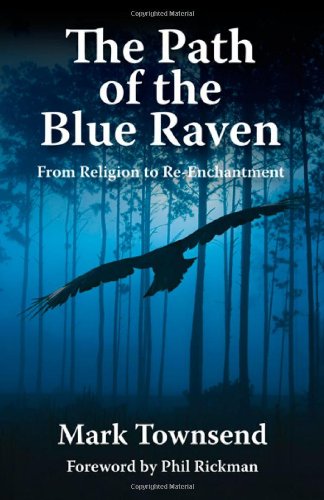
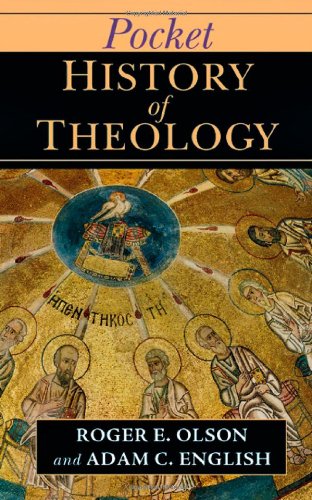
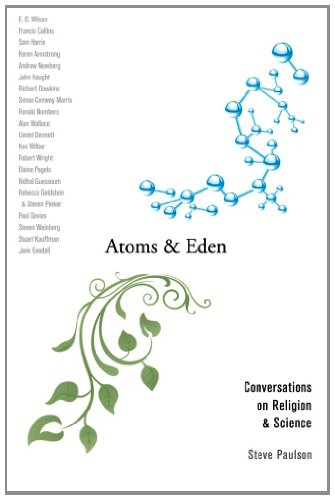
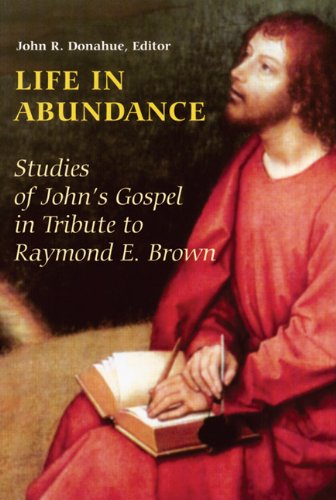
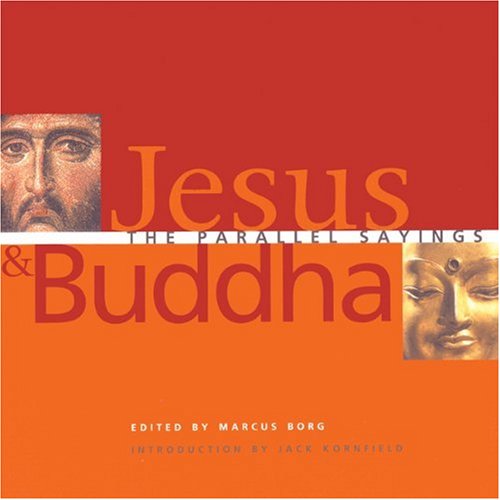









 354 Circles
354 Circles
 603 Goodreads Friends & Fans
603 Goodreads Friends & Fans

 Hello! I'm an author, historical Jesus scholar, book reviewer, and liberal Christian, which means I appreciate and attempt to exercise the humanitarian teachings of Jesus without getting hung up on any particular supernatural or religious beliefs.
The Bible is a magnificent book that has inspired and spiritually fed generations for thousands of years, and each new century seems to bring a deeper understanding of life’s purpose. This is true of not only Christianity; through the years, our age-old religions are slowly transforming from superstitious rituals into humanitarian philosophies. In short, we are growing up, and I am thrilled to be riding the wave.
I avidly read all thought-provoking religion titles. New authors: I'd love to read and review your book!
Hello! I'm an author, historical Jesus scholar, book reviewer, and liberal Christian, which means I appreciate and attempt to exercise the humanitarian teachings of Jesus without getting hung up on any particular supernatural or religious beliefs.
The Bible is a magnificent book that has inspired and spiritually fed generations for thousands of years, and each new century seems to bring a deeper understanding of life’s purpose. This is true of not only Christianity; through the years, our age-old religions are slowly transforming from superstitious rituals into humanitarian philosophies. In short, we are growing up, and I am thrilled to be riding the wave.
I avidly read all thought-provoking religion titles. New authors: I'd love to read and review your book!
 Hi! While Lee writes the articles and reviews the books, I edit, organize, and maintain the blog. The views expressed here are Lee's but I'm his biggest supporter! :-)
Hi! While Lee writes the articles and reviews the books, I edit, organize, and maintain the blog. The views expressed here are Lee's but I'm his biggest supporter! :-)
Connect With Me!